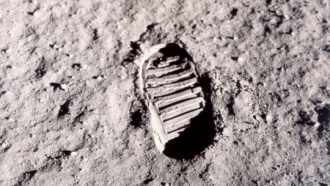
Planets
A giant, busted planet fuels a nebula’s mysterious glow
This Helix Nebula is like a colorful explosion frozen in time. Its center seems to be steadily radiating X-rays.
Come explore with us!

This Helix Nebula is like a colorful explosion frozen in time. Its center seems to be steadily radiating X-rays.

Based on the light being emitted by its shed minerals, astronomers can for the first time determine the internal composition of an exoplanet.

Scientists are studying extraterrestrial moons for clues to how planets form, how life began — and whether there’s life out there right now.

This sandlike dust blankets planets, asteroids and other rocky surfaces of our solar system, including our own planet.

Voyager 1 and 2 left Earth in 1977 to fly by the outer planets. Nearly 50 years later, these spacecraft are still transforming our knowledge of space.

Images of six Jupiter-sized worlds taken by the James Webb Space Telescope offer clues to how planets and stars form.

Ongoing observations and new lunar rock samples, including the first from its far side, should point to how both the moon and our Earth evolved.

Clues about this ancient protoplanet's catastrophic end may have been entombed in Earth's lower mantle for billions of years.

Let’s make our own craters in cocoa and flour to learn how these features form throughout the solar system — and why they’re different sizes.

If the windstorm keeps dwindling, the Great Red Spot could someday disappear — like an earlier spot observed in the 1600s.